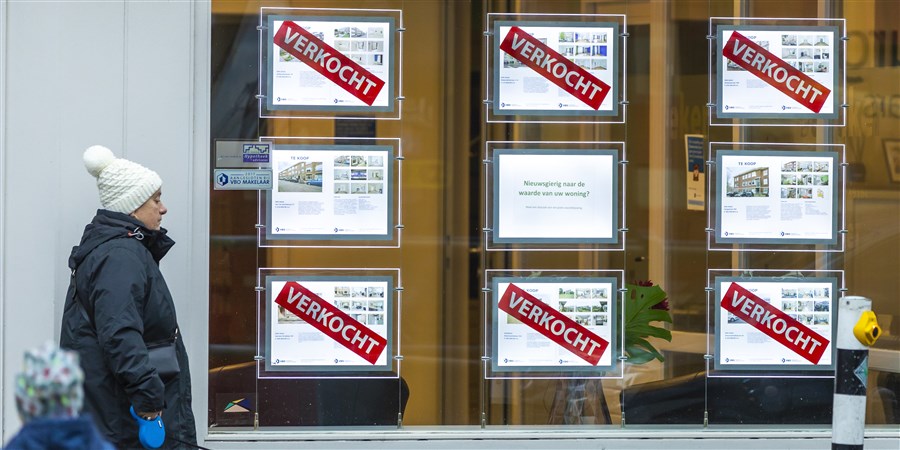New calculation method from CBS helps to identify real estate bubbles

Market and price changes
‘These ‘share deals’ cloud the picture and result in less data being collected,’ Ishaak explains. ‘This is because no tangible assets are being traded, but rather shares in shell companies that hold real estate.’And that is a problem if your aim as a regulator is to monitor the market and price changes. Share transactions make it difficult to see what prices are being paid for each property. Moreover, when large real estate portfolios change hands, there is often a ‘volume discount’, just like at the supermarket. If you don't know how much this discount is, you won't know the actual prices paid either.
Quantitative research to compare figures
Ishaak encountered the problem during his work at Statistics Netherlands. He originally studied public administration, but afterwards focused mainly on quantitative research: compiling and comparing figures. Since 2013, he has been doing that at CBS as production manager for construction and real estate prices. This CBS department publishes monthly figures on the price of real estate in the Netherlands. Since the 2008 financial crisis that followed the collapse of merchant bank Lehman Brothers, the International Monetary Fund (IMF) and the G–20 gave the department an additional task: to help spot real estate bubbles.

Understanding commercial real estate better
Just like their counterparts in other countries, CBS statisticians develop indicators that provide insight into the real estate market for exactly this purpose. How does this work for commercial real estate? Usually, housing market methods are applied without any adjustments, but that creates a large margin of uncertainty. After all, the ‘black box’ of share transactions in this sector is large. Ishaak calculated that more than 30 percent of all transactions in the Dutch real estate market are hidden in share deals. Portfolio sales also occur in large numbers. The method devised by Ishaak started by splitting up portfolios. To do this, he added up the property values (WOZ) of offices, commercial properties, homes and shops using data from the Land Registry Office (Kadaster). He then estimated an allocation key with the percentage of each property in the total amount. He also developed a new index method which focuses on limited observations of real estate transactions and heterogeneous data collection. Using the open-source programming language ‘R’, he merged this with the R package ‘cbsREPS’. This package is included in R's public repository (CRAN), and so the method can be used worldwide by R users.Trends in house prices
Ishaak also used his method to calculate housing price trends at the municipal level. The existing methods were insufficiently accurate. For this reason, CBS and the Land Registry only published price changes for the four largest municipalities. Using price information from previous periods expands the available information and allows for more accurate calculations. As a result, house price trends have recently been published for 306 municipalities. Currently, the method is also used to calculate changes in land prices.Are we heading toward another real estate bubble?
What insights do these improved techniques actually provide? ‘House prices rose in almost all municipalities at the end of 2024. Edam–Volendam stands out, because prices there fell at the beginning of 2023 and showed no signs of recovery in the same year,’ Ishaak points out. ‘We did see a recovery in 2024, which resulted in a larger difference.’ Are we actually heading toward another real estate bubble? ‘It doesn't look like it, because price increases for both residential and commercial real estate levelled off slightly in 2023. We also need to factor in financing for real estate. Due to the stricter borrowing limits introduced over the past decade and rising incomes, we appear to be more resilient to a real estate bubble than we were in 2008.’Proven method
The new method has proved its worth, as CBS is already using it to calculate the real estate figures presented each quarter. Statisticians elsewhere in Europe are also exploring ways of using the method. Ishaak: ‘That’s great, because new knowledge should be applied so that it can have the maximum impact.’Related items
- Website - TU Delft - Dissertation - Improving Commercial Property Price Statistics